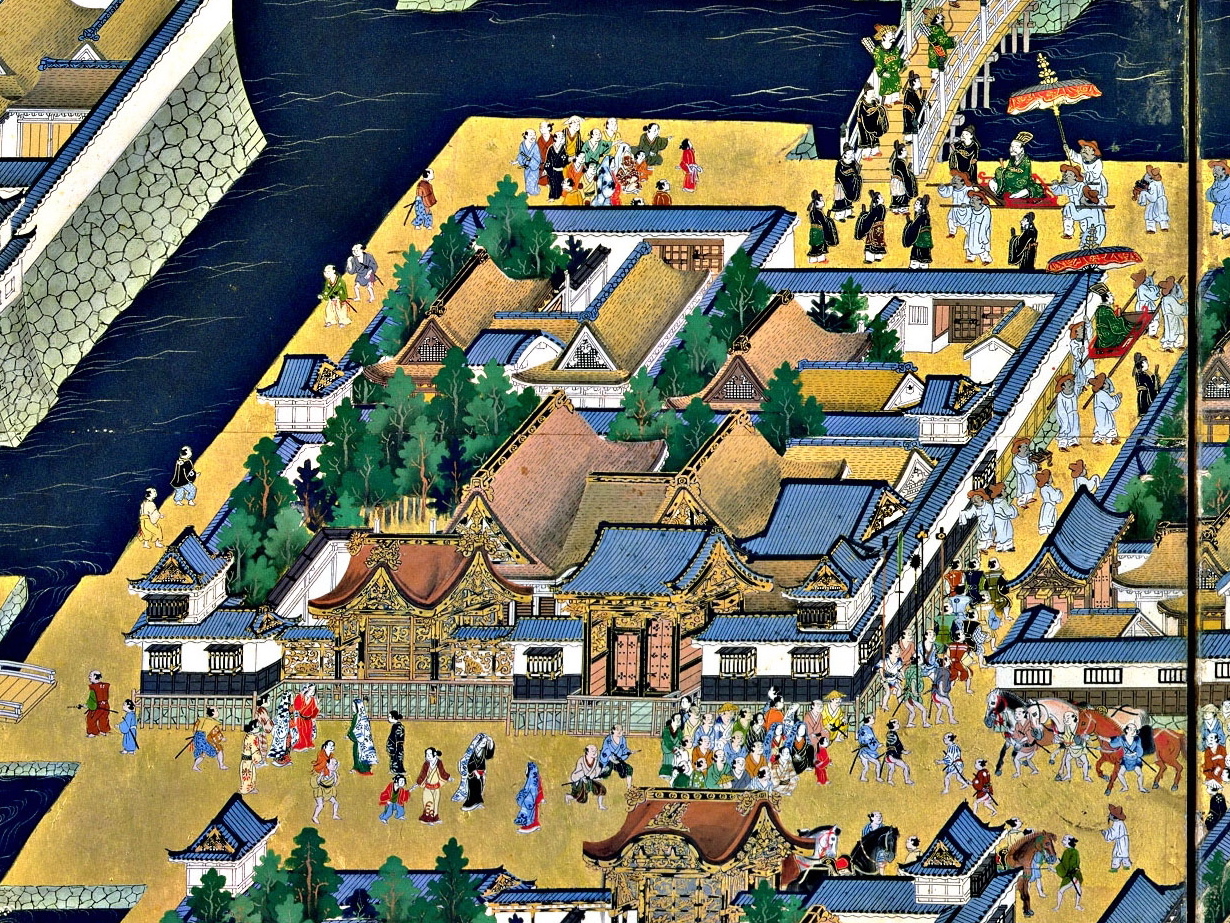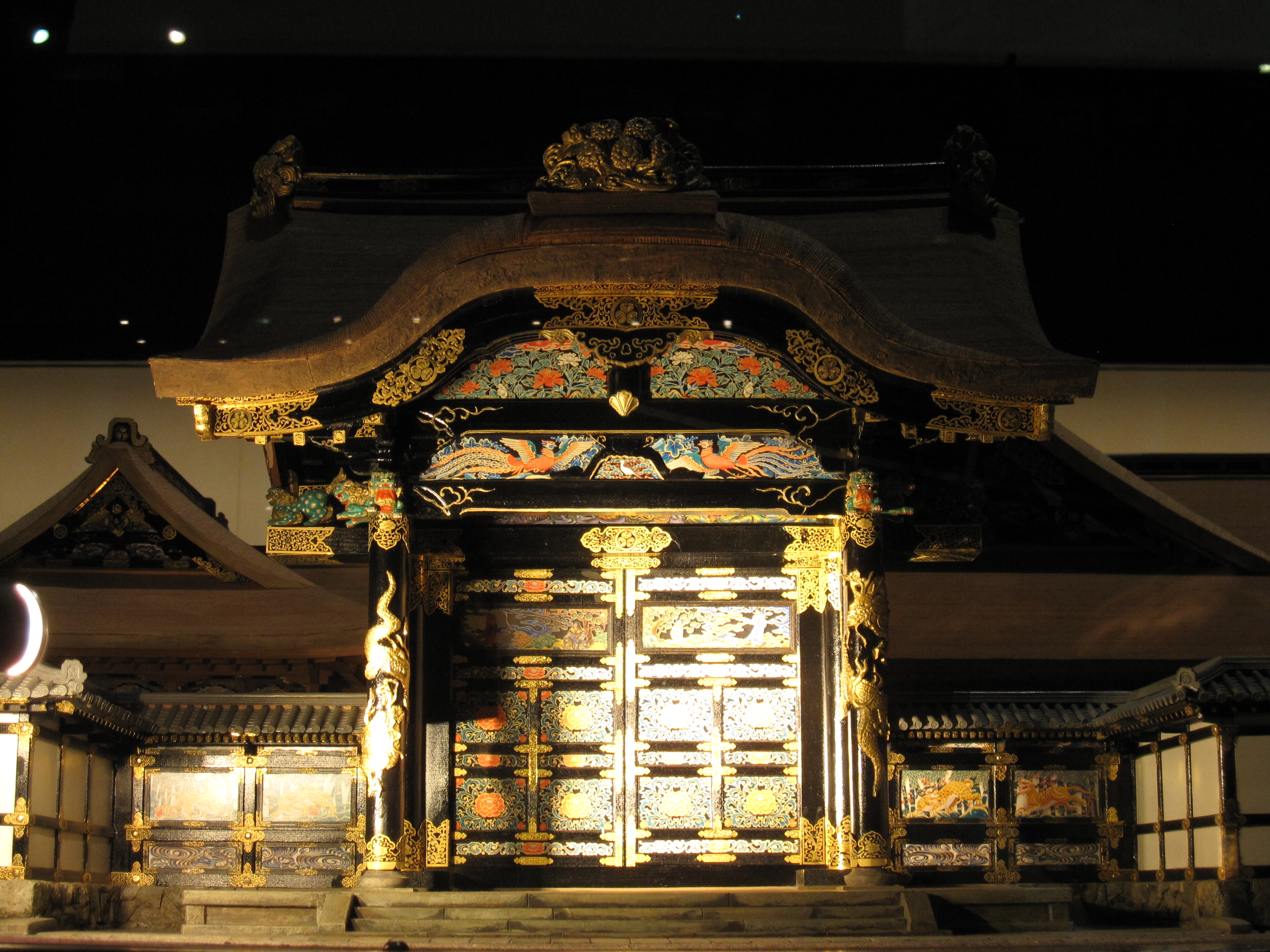Kamiyashiki Of Matsudaira Tadamasa on:
[Wikipedia]
[Google]
[Amazon]

 The was a large residential complex that was located outside
The was a large residential complex that was located outside
Japanese Architecture and Art Net Users System , shimoyashiki 下屋敷
/ref> This residence of

Edo Castle
is a flatland castle that was built in 1457 by ĹŚta DĹŤkan in Edo, Toshima District, Musashi Province. In modern times it is part of the Tokyo Imperial Palace in Chiyoda, Tokyo and is therefore also known as .
Tokugawa Ieyasu established the ...
in 17th century Japan.
History
Matsudaira Tadamasa
was an early to mid-Edo period Japanese samurai, and ''daimyō''. Papinot, Jacques Edmond Joseph. (1906). ''Dictionnaire d’histoire et de géographie du Japon''; Papinot, (2003)"Matsudaira" at ''Nobiliare du Japon'', p. 30 retrieved 2013-4-9.
...
(1597–1645) was ''daimyō
were powerful Japanese magnates, feudal lords who, from the 10th century to the early Meiji era, Meiji period in the middle 19th century, ruled most of Japan from their vast, hereditary land holdings. They were subordinate to the shogun and n ...
'' of Fukui Domain and a grandson of Tokugawa Ieyasu
was the founder and first ''shĹŤgun'' of the Tokugawa Shogunate of Japan, which ruled Japan from 1603 until the Meiji Restoration in 1868. He was one of the three "Great Unifiers" of Japan, along with his former lord Oda Nobunaga and fellow ...
. His "upper residence" or main residence (上屋敷 ''kamiyashiki'') was in front of the Ōtemon gate of Edo Castle in what is now Ōtemachi
is a district of Chiyoda, Tokyo, Japan. It is located north of Tokyo Station and Marunouchi, east of the Imperial Palace, west of Nihonbashi and south of Kanda. It is the location of the former site of the village of Shibazaki, the most a ...
, Tokyo. During the Edo period, a ''kamiyashiki'' was main residence of a ''daimyĹŤ'', and served as his primary residence and the residence of his official wife and heir, as well as much of his entourage while he was staying in Edo on ''sankin-kĹŤtai
''Sankin-kōtai'' ( ja, 参覲交代/参覲交替, now commonly written as ja, 参勤交代/参勤交替, lit=alternate attendance, label=none) was a policy of the Tokugawa shogunate during most of the Edo period of Japanese history.Jansen, M ...
''. It was also a place where he conducted the day-to-day affairs of the domain while he was in Edo. Most domains had a "lower" or smaller residence or retreat, called ''shimoyashiki'' (下屋敷), typically located in the outskirts of Edo, which also served as a place of refuge should the main residence be destroyed in one of the many fires which plagued the city. Some domains also maintained another spare Edo residence, known as the ''nakayashiki'' (ä¸ĺ±‹ć•·), located at some intermediate distance, which was often inhabited by the younger generation who would succeed to the lordship, or to a retired former lord./ref> This residence of
Matsudaira Tadamasa
was an early to mid-Edo period Japanese samurai, and ''daimyō''. Papinot, Jacques Edmond Joseph. (1906). ''Dictionnaire d’histoire et de géographie du Japon''; Papinot, (2003)"Matsudaira" at ''Nobiliare du Japon'', p. 30 retrieved 2013-4-9.
...
was a magnificent Momoyama-style compound, constructed on a large lot. In 1657 however, during the disastrous Great Fire of Meireki, this mansion burned to the ground. Thereafter, such luxurious residences were no longer built.
Architecture
The mansion consisted of a main building with two large roofs, constructed ofcryptomeria
''Cryptomeria'' (literally "hidden parts") is a monotypic genus of conifer in the cypress family Cupressaceae, formerly belonging to the family Taxodiaceae. It includes only one species, ''Cryptomeria japonica'' ( syn. ''Cupressus japonica'' L ...
wood. The residence was only one storey high in the typical ''shĹŤin'' style, with large roofs for ventilation. Apart from the main residence there were other minor buildings for servants as well as a number of gardens with trees. The complex was protected by high, white-washed walls with two-storey watch towers at each corner. The main access to the residence was through two large gates, while there were minor gates for servants in the back. One broad gate was close to the ''daidokoro'', which was in the main part of the residence, while a second gate was reserved normally only for high visitors such as the ''shĹŤgun
, officially , was the title of the military dictators of Japan during most of the period spanning from 1185 to 1868. Nominally appointed by the Emperor, shoguns were usually the de facto rulers of the country, though during part of the Kamakur ...
'' himself. The gate for the ''shĹŤgun'' was monumental in proportions, painted black with golden adornments, with two painted phoenixes above. The curved roof with the symbol of the Matsudaira clan
The was a Japanese samurai clan that descended from the Minamoto clan. It originated in and took its name from Matsudaira village, in Mikawa Province (modern-day Aichi Prefecture). During the Sengoku period, the chieftain of the main line of th ...
above added to a sense of importance. A small moat ran along three sides of the mansion.
The layout and appearance was typical for the ''daimyĹŤ'' residences in the ĹŚtemachi
is a district of Chiyoda, Tokyo, Japan. It is located north of Tokyo Station and Marunouchi, east of the Imperial Palace, west of Nihonbashi and south of Kanda. It is the location of the former site of the village of Shibazaki, the most a ...
area outside Edo Castle, as is evidenced in the depiction seen on the contemporary ''Edo-zu byĹŤbu'' screens from the 17th century.
The 1/30 scale model in the Edo-Tokyo Museum
The is a historical museum located at 1-4-1 Yokoami, Sumida, Tokyo, Sumida-Ku, Tokyo in the RyĹŤgoku, Ryogoku district. The museum opened in March 1993 to preserve Edo's cultural heritage, and features city models of Edo and Tokyo between 1 ...
was reproduced based mainly on three sources: illustrations in the ''Iyo-dono yashiki sashi-zu'' ("Illustrations of the mansion of the Governor of Iyo") which is in the possession of the Ikeda family archives at Okayama University
is a national university in Japan. The main campus is located in Tsushima-Naka, Okayama, Okayama Prefecture.
The school was founded in 1870 and it was established as a university in 1949.
History
Okayama University was originally founded as t ...
, the ''Edo-zu byĹŤbu'' ("Screens of Edo") in the collection of the National Museum of Japanese History
The , commonly known in Japanese as Rekihaku, is a history museum in Sakura, Chiba, Japan. The museum was founded in 1981 as an inter-university research consortium, and opened in 1983. The collections of museum focus on the history, archaeology, a ...
, and the ''KĹŤra KĹŤnen oboegaki'' ("Memorandum of KĹŤra KĹŤnen") in the Tokyo Metropolitan Library
is the metropolitan public library system for Tokyo, Japan.
Libraries
The Tokyo Metropolitan Library has two branches. The Hibiya Library, a third branch, was closed on April 1, 2009. Both branches provide access to free public Wi-Fi, printing an ...
. Some of the minor structures have been left out in the model in order to highlight the main buildings in the back. The minor buildings included servants quarters, storage, stables, etc. and their position is indicated by the beige layout on the white ground.
See also
* ĹŚzone ''Oshitayashiki'' in NagoyaReferences
External links
{{commonscat-inline, Kamiyashiki of Matsudaira Tadamasa Edo Buildings and structures in Tokyo Fukui-Matsudaira clan